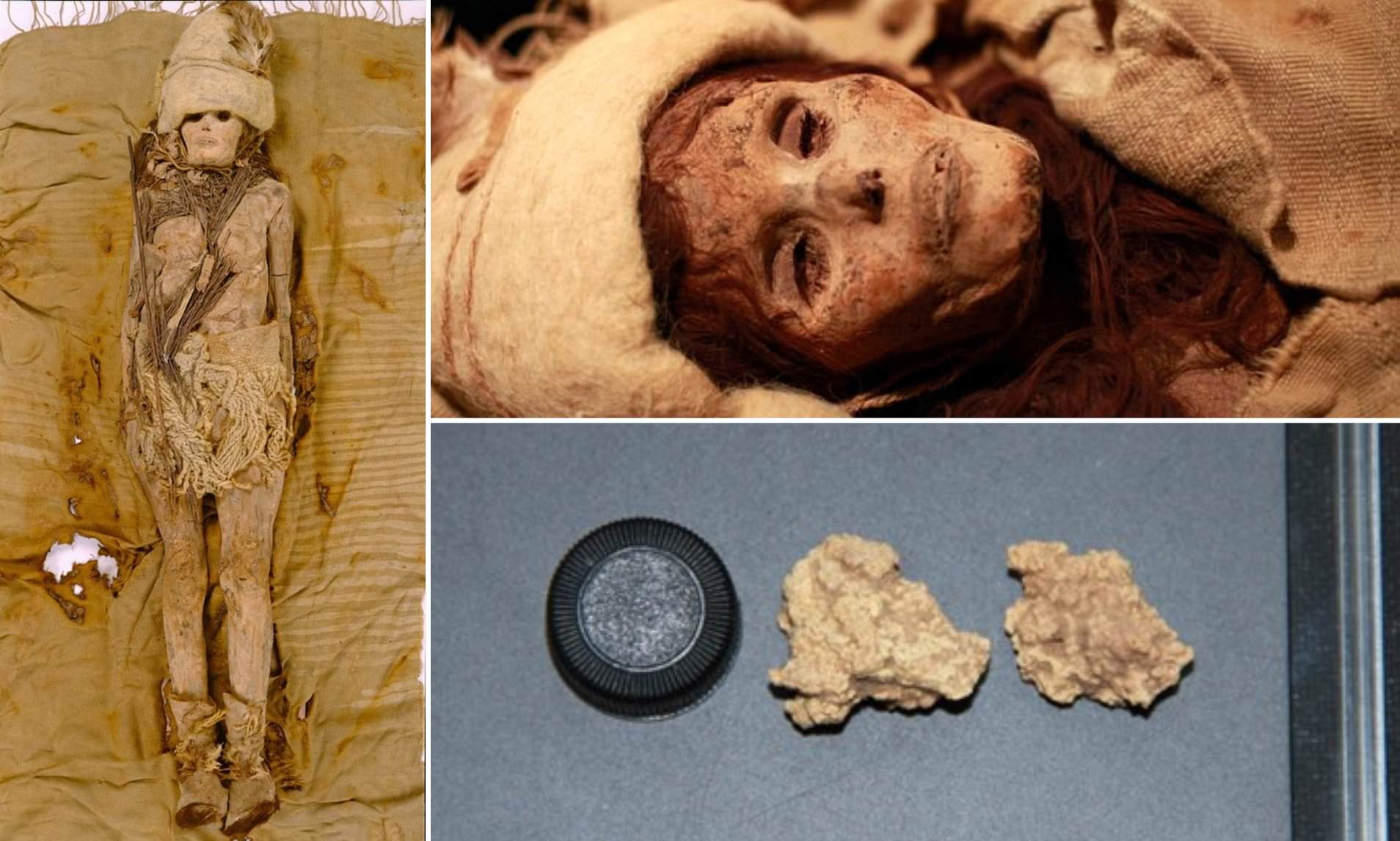
A high-quality, aged cheddar is a fundamental component found on any respectable cheese platter.
While most types are typically aged for about 12 months, this is far surpassed by the world's oldest cheese, which has a history dating back 3,600 years.
.
Researchers have extracted DNA from the cheese, uncovering its essential components.
Their analysis indicates that the ancient cheese was produced from kefir - a popular fermented milk beverage that is highly beneficial for gut health.
About 20 years ago, a team of archaeologists found strange white substances applied to the heads and necks of several mummies buried in the Xiaohe cemetery in the Tarim Basin of Northwestern China.
These mummies were approximately 3,300 to 3,600 years old, dating back to the Bronze Age.
At that point, researchers believed that these substances might be a type of fermented dairy product, but they were unable to pinpoint precisely which type.
Now, employing cutting-edge DNA analysis, researchers have finally unraveled the mystery.
They determined the presence of cow and goat DNA in the cheese samples, affirming that the white substances are indeed kefir cheese.
The samples from three different tombs contained species of bacteria and fungi, including Lactobacillus kefiranofaciens and Pichia kudriavzevii, both commonly found in present-day kefir grains.
Kefir grains are collections of microorganisms comprising various species of probiotic bacteria and yeast, which ferment milk to produce kefir cheese.
In addition to enhancing the beneficial bacteria in our stomachs, kefir is believed to have several other health benefits, including supporting bone health, regulating blood sugar levels, and promoting heart health.
"It is the oldest known cheese sample ever discovered globally," Professor Qiaomei Fu, head of the ancient DNA lab at the Chinese Academy Sciences, said.
Items such as cheese are particularly hard to preserve for thousands of years, making this find extremely rare and valuable.
Examining ancient cheese in depth can help us gain insights into the eating habits and ways of life of our forebears.
Decoding the genetic sequences of the bacteria in the ancient kefir cheese allowed the researchers the ability to follow the evolution of probiotic bacteria over the past 3500 years.
Their results contradict the widespread assumption that kefir originated solely in the North Caucasus mountain region of Russia.
They propose that the kefir culture has been preserved in the Xinjiang region of northwestern China since the Bronze Age.
The study also showed that, in comparison to ancient kefir bacteria, modern varieties are more likely to avoid triggering an immune response in the human intestine – making it easier to digest.
"This study represents a historic opportunity to witness firsthand how a bacterium developed over the last 3,000 years," Professor Fu explained.
'By investigating dairy products, we've gained a more precise understanding of ancient human life and their interactions with the environment.'
Today, kefir products include beverages, yogurts and ice creams.
The study's outcome was published in the scientific journal Cell.
Read more